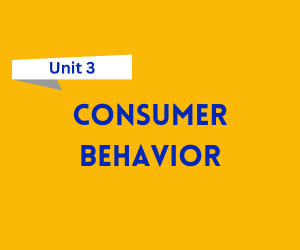Understanding consumer behavior is essential in economics, as it helps analyze how individuals make decisions regarding the purchase of goods and services. Unit 2 dives deep into various utility theories and concepts that explain consumption patterns.

Download Unit 2 – Consumer Behavior Notes
Make revision quick and stress-free:
⬇️
Download Unit 2 Notes PDF
Utility Analysis
Utility refers to the satisfaction or pleasure a consumer derives from consuming goods and services. This topic explains how consumers measure and compare utility through different approaches.
Cardinal and Ordinal Approaches
- Cardinal Utility assumes utility can be measured in numbers (utils). It enables direct comparison of satisfaction levels.
- Ordinal Utility suggests that consumers can rank their preferences but cannot assign specific numbers to utility.
Law of Diminishing Marginal Utility
This law states that as a person consumes more units of a good, the additional satisfaction (marginal utility) gained from each extra unit declines.
Example: The first slice of pizza brings more satisfaction than the fifth or sixth one.
Law of Equi-Marginal Utility
According to this law, a consumer maximizes total utility when the ratio of marginal utility to price is equal across all goods consumed. This helps in efficient resource allocation.
Formula: MUx/Px = MUy/Py
Indifference Curve Analysis
This is a graphical method of analyzing consumer preferences and satisfaction. Each curve represents combinations of two goods that provide the same level of satisfaction.
Properties of Indifference Curves
- Downward sloping
- Convex to the origin
- Indifference curves never intersect
Budget Line
- Represents all possible combinations of two goods that a consumer can buy with a given income and prices.
Consumer Equilibrium
- Achieved when the budget line is tangent to an indifference curve. It reflects the highest satisfaction a consumer can attain.
Price, Income, and Substitution Effects
- Price Effect: Change in quantity demanded due to a change in the product’s price.
- Income Effect: Change in quantity demanded when a consumer’s income changes, affecting purchasing power.
- Substitution Effect: When a product becomes cheaper, consumers may substitute it for a relatively more expensive one.
